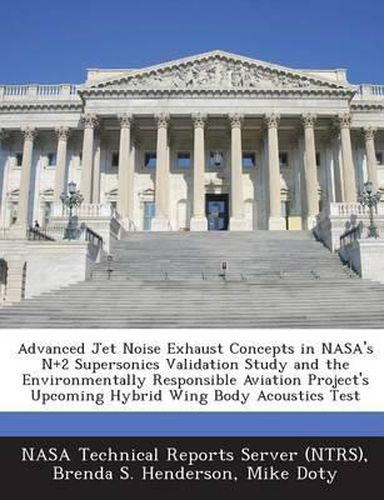Readings Newsletter
Become a Readings Member to make your shopping experience even easier.
Sign in or sign up for free!
You’re not far away from qualifying for FREE standard shipping within Australia
You’ve qualified for FREE standard shipping within Australia
The cart is loading…






Acoustic and flow-field experiments were conducted on exhaust concepts for the next generation supersonic, commercial aircraft. The concepts were developed by Lockheed Martin (LM), Rolls-Royce Liberty Works (RRLW), and General Electric Global Research (GEGR) as part of an N+2 (next generation forward) aircraft system study initiated by the Supersonics Project in NASA s Fundamental Aeronautics Program. The experiments were conducted in the Aero-Acoustic Propulsion Laboratory at the NASA Glenn Research Center. The exhaust concepts presented here utilized lobed-mixers and ejectors. A powered third-stream was implemented to improve ejector acoustic performance. One concept was found to produce stagnant flow within the ejector and the other produced discrete-frequency tones (due to flow separations within the model) that degraded the acoustic performance of the exhaust concept. NASA’s Environmentally Responsible Aviation (ERA) Project has been investigating a Hybrid Wing Body (HWB) aircraft as a possible configuration for meeting N+2 system level goals for noise, emissions, and fuel burn. A recently completed NRA led by Boeing Research and Technology resulted in a full-scale aircraft design and wind tunnel model. This model will be tested acoustically in NASA Langley’s 14-by 22-Foot Subsonic Tunnel and will include dual jet engine simulators and broadband engine noise simulators as part of the test campaign. The objectives of the test are to characterize the system level noise, quantify the effects of shielding, and generate a valuable database for prediction method development. Further details of the test and various component preparations are described.
$9.00 standard shipping within Australia
FREE standard shipping within Australia for orders over $100.00
Express & International shipping calculated at checkout
Stock availability can be subject to change without notice. We recommend calling the shop or contacting our online team to check availability of low stock items. Please see our Shopping Online page for more details.
Acoustic and flow-field experiments were conducted on exhaust concepts for the next generation supersonic, commercial aircraft. The concepts were developed by Lockheed Martin (LM), Rolls-Royce Liberty Works (RRLW), and General Electric Global Research (GEGR) as part of an N+2 (next generation forward) aircraft system study initiated by the Supersonics Project in NASA s Fundamental Aeronautics Program. The experiments were conducted in the Aero-Acoustic Propulsion Laboratory at the NASA Glenn Research Center. The exhaust concepts presented here utilized lobed-mixers and ejectors. A powered third-stream was implemented to improve ejector acoustic performance. One concept was found to produce stagnant flow within the ejector and the other produced discrete-frequency tones (due to flow separations within the model) that degraded the acoustic performance of the exhaust concept. NASA’s Environmentally Responsible Aviation (ERA) Project has been investigating a Hybrid Wing Body (HWB) aircraft as a possible configuration for meeting N+2 system level goals for noise, emissions, and fuel burn. A recently completed NRA led by Boeing Research and Technology resulted in a full-scale aircraft design and wind tunnel model. This model will be tested acoustically in NASA Langley’s 14-by 22-Foot Subsonic Tunnel and will include dual jet engine simulators and broadband engine noise simulators as part of the test campaign. The objectives of the test are to characterize the system level noise, quantify the effects of shielding, and generate a valuable database for prediction method development. Further details of the test and various component preparations are described.